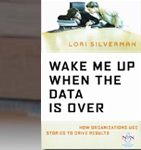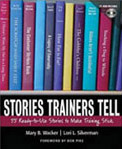Over the weekend, I saw a posting about business storytelling on a LinkedIn group. It references this article on a website called MindTools.com written by James Manktelow and the Mind Tools Team.
I decided to comment on the posting and to write a letter to James and his team. Why? Even though the piece raises some important pointers about the subject of business storytelling, it confuses “types of stories” with “story structure” and misses some critical items.
Here’s what I wrote:
Cathy,
As the author of three books on business storytelling, thank you for raising its importance in this discussion. I’d like to embellish the article content that you referenced to provide some additional resources.
First, there’s only one reason to use storytelling practices in business: to move people to action. That action could be a change in behavior, mindset, or emotional reaction.
The examples given in the article speak to the “push” side of storytelling – sharing stories with others. What we now know today through a variety of research is that the pull side of story is absolutely key too – that is, having the ability to evoke stories from others through story prompts and story triggers, This is especially true in a sales situation: The ability to pull stories from prospects and retell them is critical to being able to move that person/firm to being a customer than telling the story about what your company offers.
The piece you referenced gives some terrific examples of types of stories, as does this chart. In business storytelling, it is important to know about types of stories in addition to story structures. These are different. Here’s a link to a reference on various kinds of story structure.
Great stories, at their most basic structure, usually have three parts: a beginning (the context), action (a story must have conflict or it isn’t a story), and results (the story’s resolution). However, in business, for a story to have impact, it must end with a key point and a call to action. We spend an entire chapter on this in Business Storytelling for Dummies.
With this said, there are times when a great story might need to bring forth an opportunity before the conflict. We also discuss this nuance in the Dummies book. Nancy Duarte speaks to this as well in her book, Resonate.
Thank you again for highlighting this article!
Lori Silverman, author, speaker, consultant
I’d love to hear what you feel needs to be added or clarified on the MindTools piece. Comment away!








